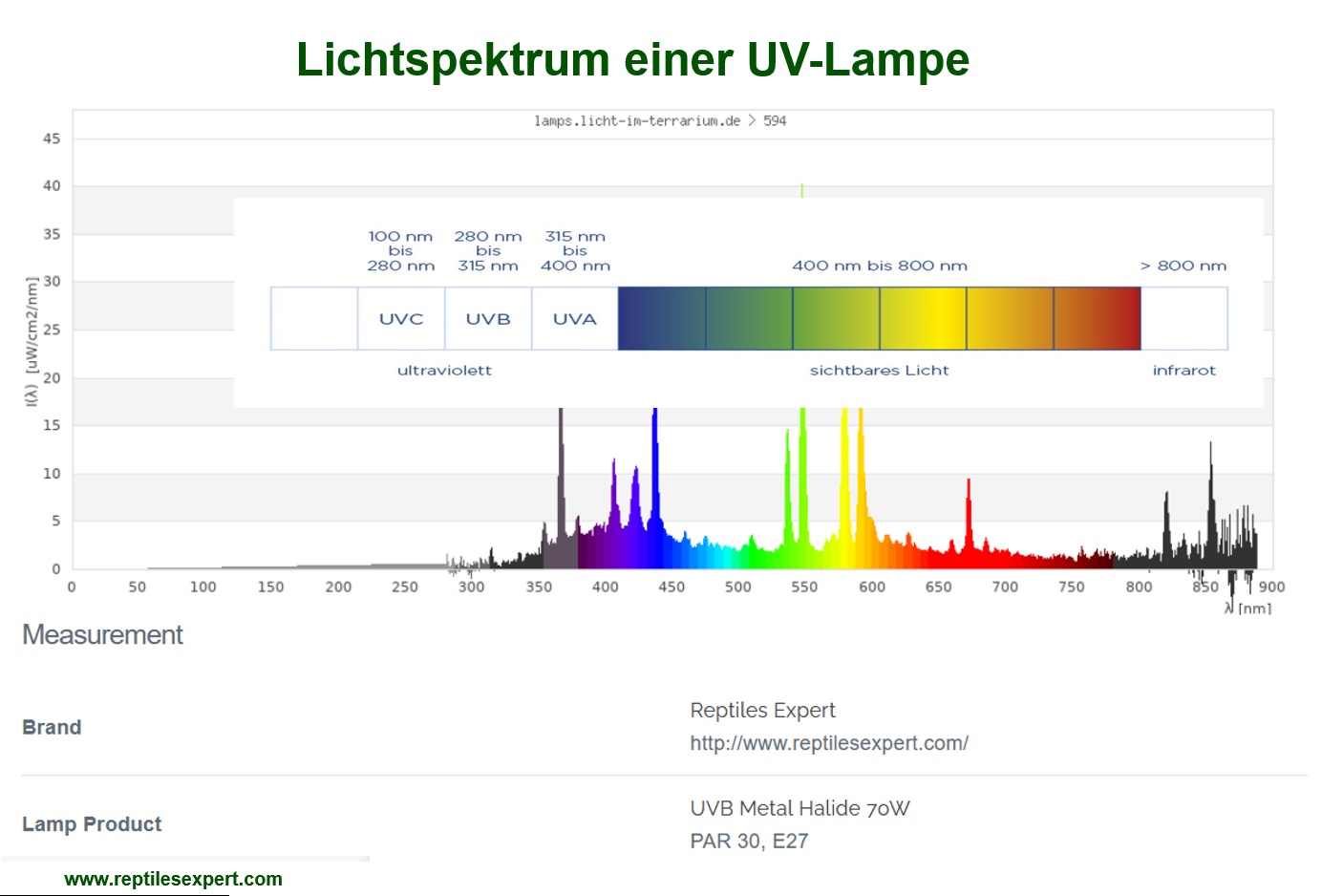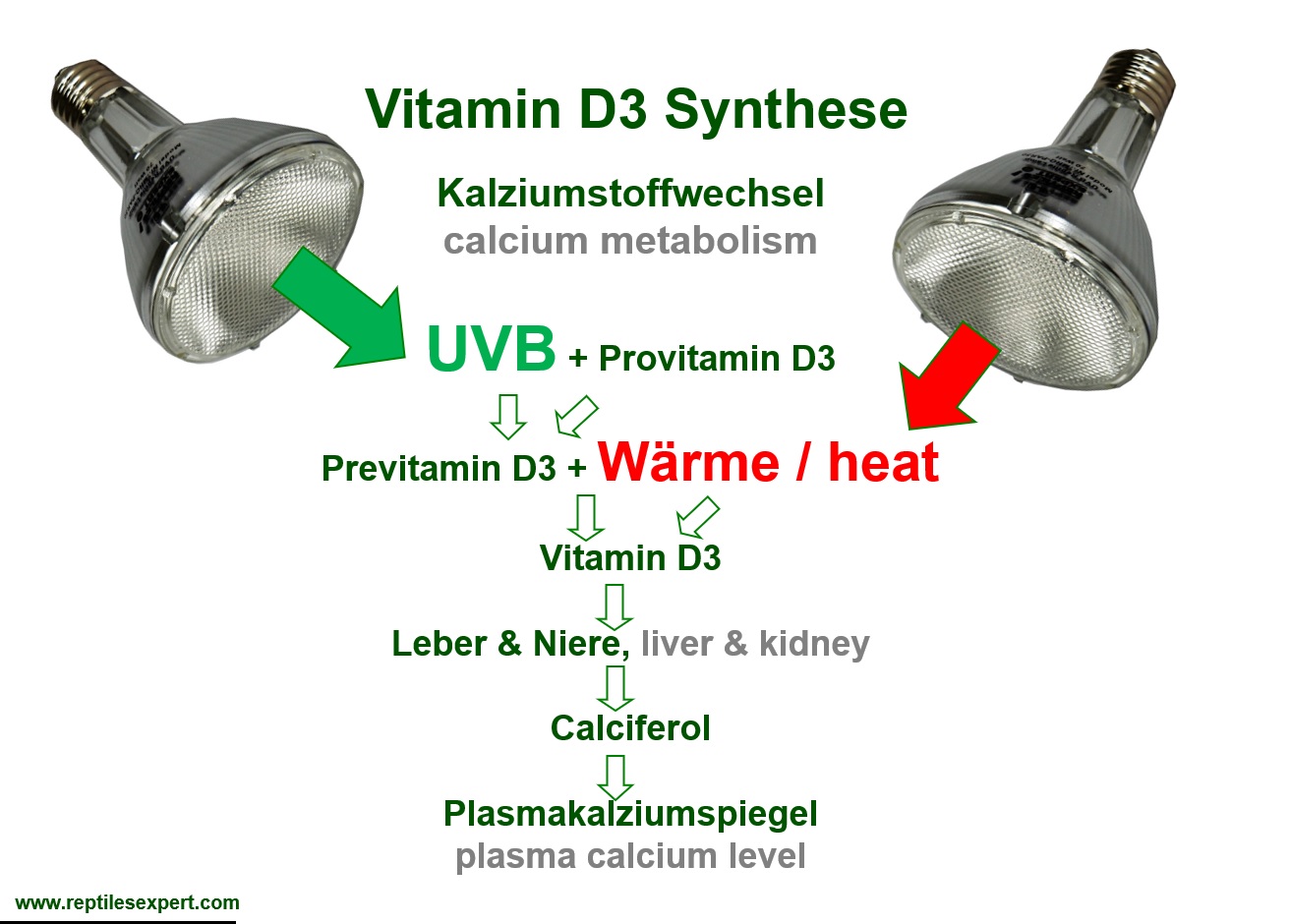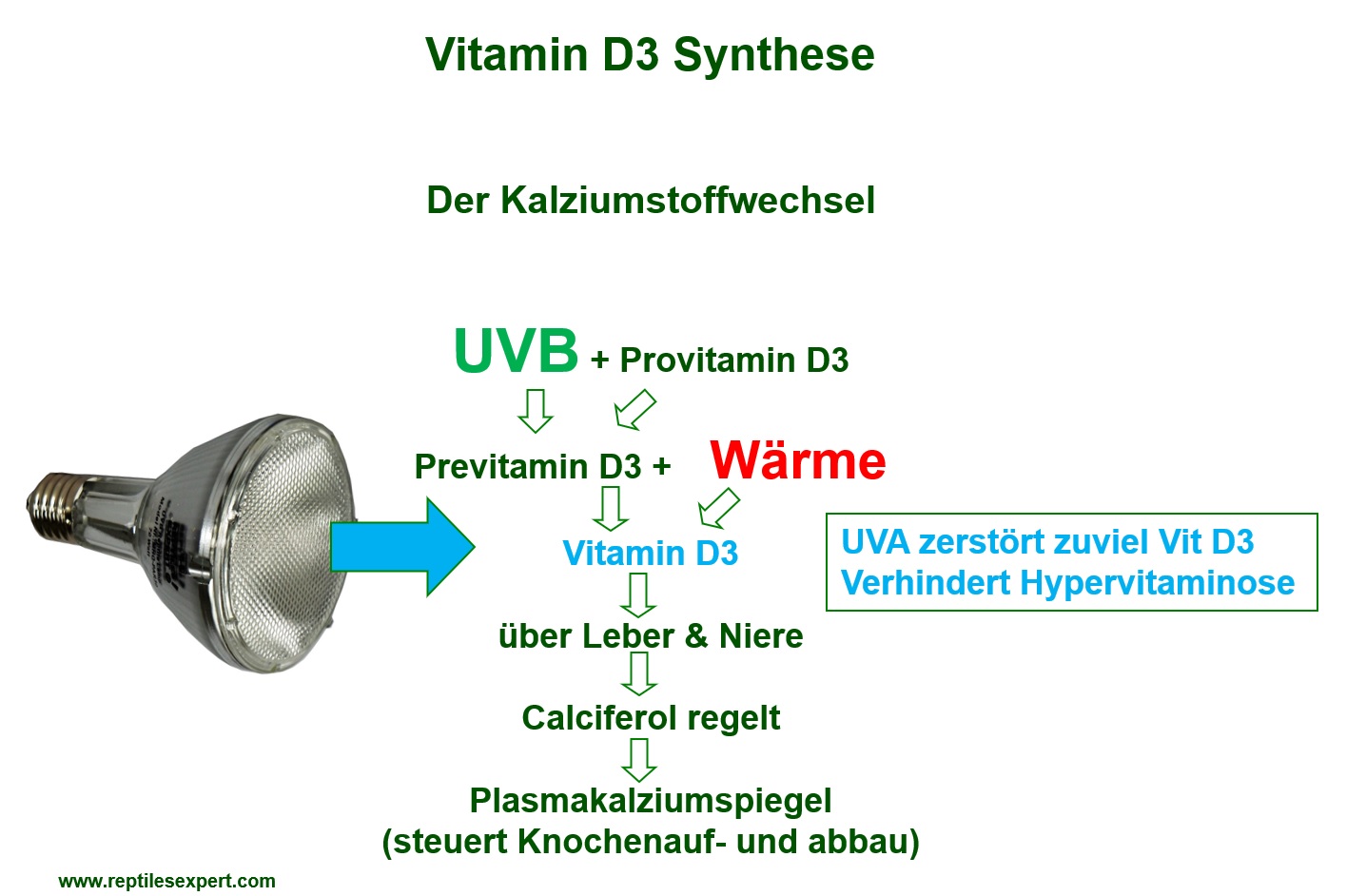We use cookies to make your experience better. To comply with the new e-Privacy directive, we need to ask for your consent to set the cookies. Learn more.
Everything about UV light in the terrarium and vitamin D3 synthesis

Why is vitamin D3 synthesis by UV metal halid lamps so important for reptiles?
This process is very important for the animals' calcium metabolism. Precursors of vitamin D3 are formed in the upper layers of the skin as a result of UVB radiation and heat. The plasma calcium level in the blood is increased by the liver and kidneys. Calcium is important for bone growth, egg shell formation and strengthening shells in turtles. A deficiency means dreaded metabolic bone diseases (rickets), softening of shells in turtles, risk of fractures, etc...
Keeping reptiles without UV radiation and radiation heat supply is harmful to the animals. This is why UV terrarium lamps are so important for keeping reptiles.


However, too much vitamin D3 can also be harmful – this is called hypervitaminosis. Another advantage of UV metal halide lamps is that the UVA radiation from these lamps reduces excess vitamin D3. A balanced balance between UVB and UVA radiation ensures that hypervitaminosis (poisoning) cannot possibly occur. In this way, the natural safety mechanism of sunlight is imitated by these lamps in the best possible way.


Thus, special UV terrarium lamps (UV metal halid lamps) replace the sunlight in the natural habitat of the reptiles. As cold-blooded animals, reptiles also need heat directly from above on the sunbathing area. This ideal combination of UV radiation, thermal radiation and very bright visible light cannot be replaced by other lamp technologies.
The spectrum of a metal halide lamp thus covers the important frequencies in all wavelength ranges.


The UVB range of 305-315nm is important for vitamin D3 synthesis. The UVB range between 315-400nm for the prevention of hypervitaminosis.
Metal halide lamps are used in zoos, animal parks and reptile sanctuaries throughout Europe. When veterinarians diagnose a vitamin D3 deficiency in reptiles, irradiation with UV metal halid lamps is the immediate therapy.



